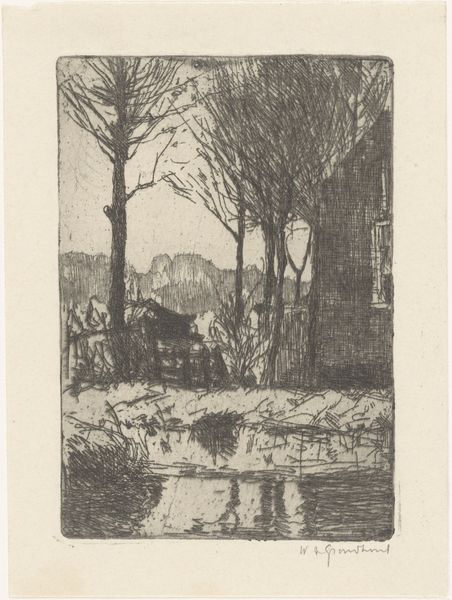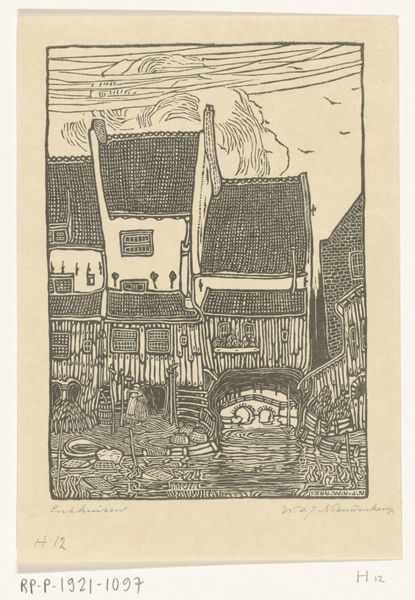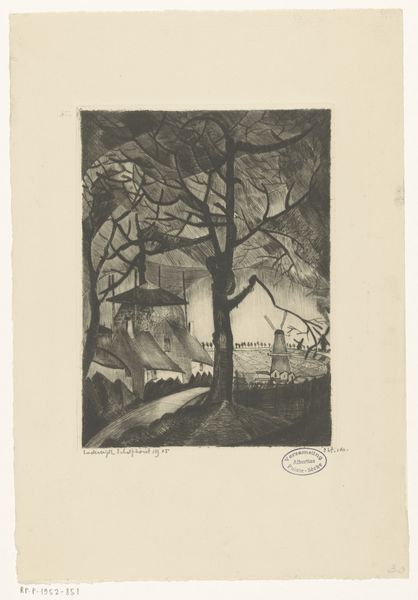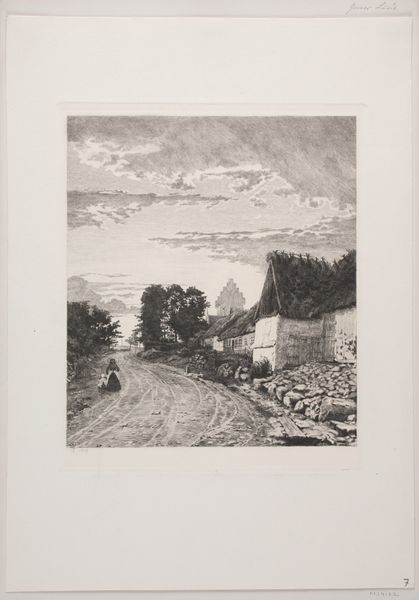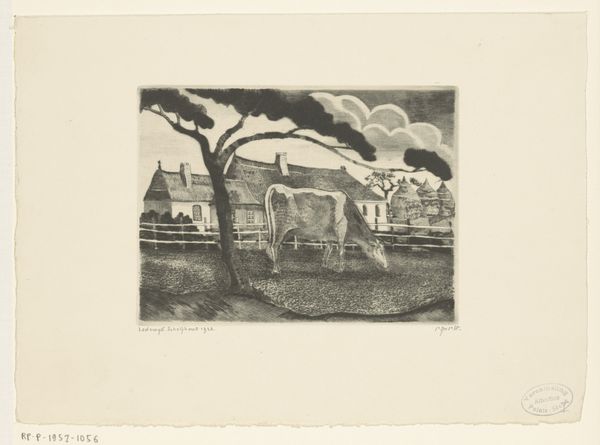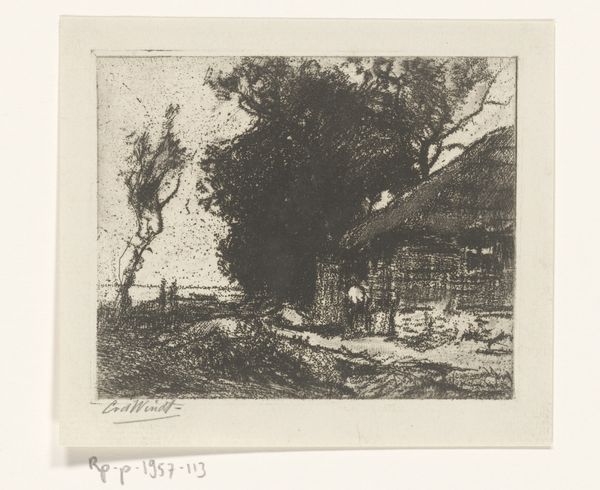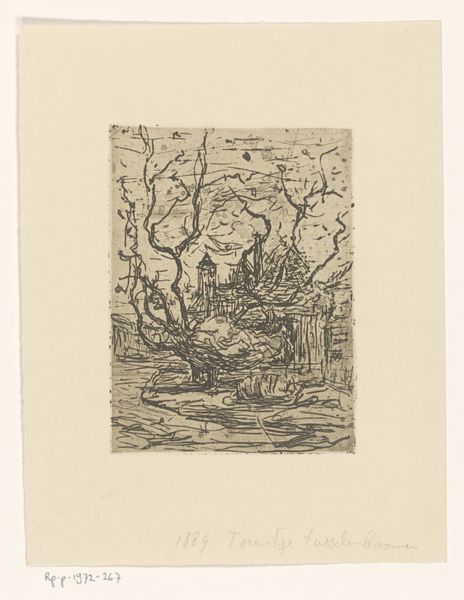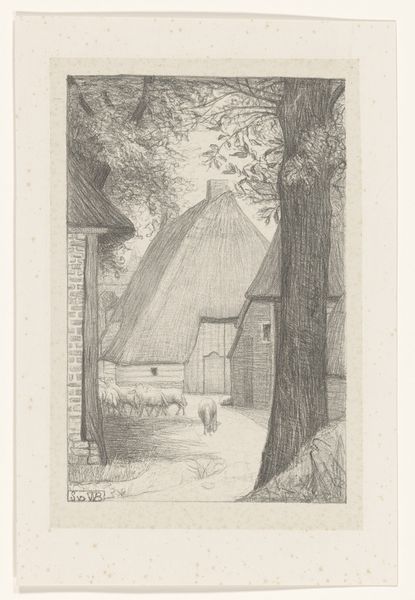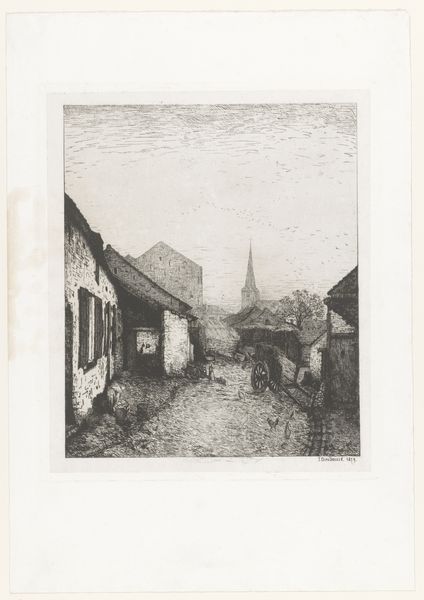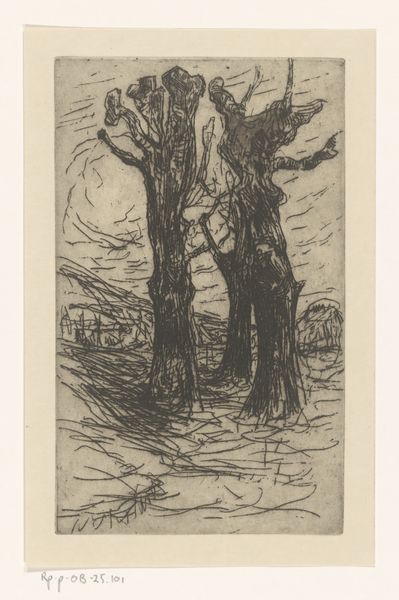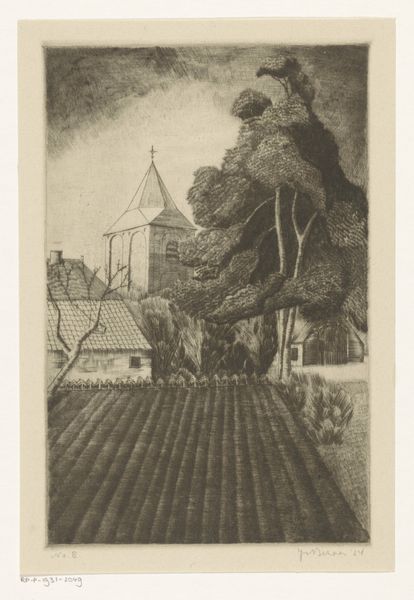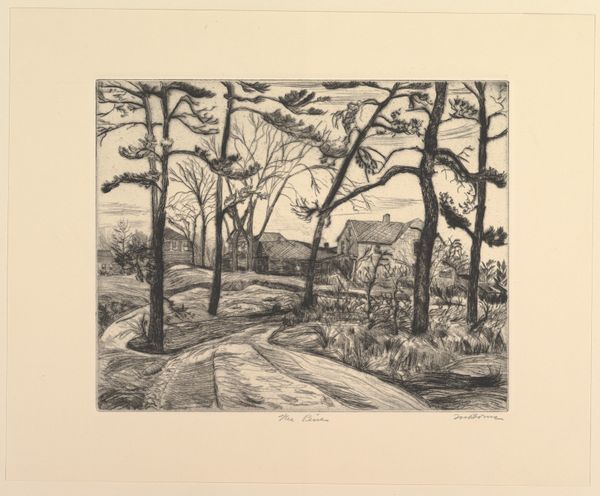
print, etching
# print
#
etching
#
landscape
#
realism
Dimensions: height 247 mm, width 198 mm
Copyright: Rijks Museum: Open Domain
Editor: Here we have Lodewijk Schelfhout's 1926 etching, "Molen van Etikhove," housed at the Rijksmuseum. It depicts a quaint scene with a windmill and grazing cow, rendered in very fine lines. What stands out to me is how the artist uses light and shadow. What do you see in this piece? Curator: Beyond the serene pastoral scene, I see a subtle commentary on labor and land ownership in the early 20th century. The windmill, a symbol of industry, contrasts with the solitary cow, representing traditional agrarian life. Who benefits from the labor these symbols suggest? The landscape itself becomes a stage for these socio-economic forces, doesn’t it? Editor: That’s a really interesting perspective! I hadn't considered the potential tension between industry and agriculture. Curator: Schelfhout created this during a period of significant industrial expansion in Europe. Considering the history, does the scene present an idealized, perhaps even nostalgic, view of rural life? Or, could it be viewed as a premonition, a subtle anxiety about the future of work and land? Editor: Maybe it’s both? There's definitely a sense of peace, but now that you mention it, the looming presence of the windmill casts a bit of a shadow, literally and figuratively. It makes me think about how progress can often come at a cost. Curator: Exactly! The artwork is then not merely a pretty picture, but rather an opportunity for dialogue on the dynamics of power, the control of resources, and the romanticization—or critique—of labour practices. Editor: I’ll definitely look at landscapes differently from now on. Thanks for showing me a whole new dimension. Curator: It's through questioning these seemingly simple images that we reveal their complex layers and their reflection of larger societal concerns.
Comments
No comments
Be the first to comment and join the conversation on the ultimate creative platform.
